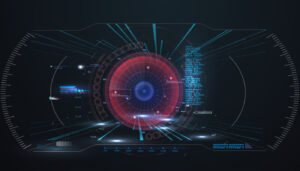AI in game art is bringing some exciting changes to game art, helping artists work faster, stay creative, and reach new levels of realism. Here’s how:
Creating Assets in Record Time
Imagine not having to spend endless hours building every asset from scratch. AI can now whip up textures, objects, and environments at incredible speeds, giving artists more time to focus on gameplay and story. For studios, this means faster prototyping and the freedom to explore ideas without getting bogged down in the details. Tools like NVIDIA Omniverse, Adobe Substance 3D, and Midjourney are some of the AI-driven solutions that streamline asset creation, enabling artists to quickly experiment and bring their visions to life.
Building Environments with a Click
Creating vast, immersive worlds is usually a long and meticulous process, but AI helps to speed it up. From mountains to cities, AI tools generate lifelike landscapes, freeing game designers to concentrate on making these environments engaging and interactive. This makes open-world games more expansive and polished without requiring as much manual effort.
Diverse and Unique Character Designs
AI is also stepping up in character creation, helping designers quickly create diverse and detailed characters. Instead of repetitive, template-like characters, AI can generate a range of designs that feel unique, vibrant, and inclusive, enhancing the storytelling and immersiveness of the game.
Consistent Style Across the Board
For large teams, maintaining a consistent art style can be tricky. AI can ensure that everything, from backgrounds to characters, aligns visually. This keeps the game’s look coherent while allowing artists to focus on the creative aspects of their work rather than constantly adjusting for style.
Adding Realistic Detail with AI Magic
AI’s ability to enhance textures and add realistic details means that artists can now create hyper-detailed visuals that pull players deeper into the game. This level of detail, made possible by technologies like Generative Adversarial Networks (GANs), creates stunning environments that feel both beautiful and realistic.
Adapting Assets Based on Gameplay
AI can adapt character or environment features based on what’s happening in the game, creating a dynamic experience. Imagine a character’s outfit changing with the seasons or weather – small touches like these make the game feel responsive and alive, immersing players even further.
Balancing AI with Human Creativity
While AI can automate and accelerate tasks, it’s not here to replace human artists. The true magic happens when artists and AI work together, blending technology with human creativity to build engaging and memorable game worlds. AI can jump-start the creative process and handle the heavy lifting, leaving artists free to add personal touches and unique storytelling elements.
Navigating Legal and Ethical Boundaries
AI in game art brings up important questions around copyright and ownership. Using properly licensed AI tools helps studios avoid legal issues, ensuring their creations are both innovative and secure for commercial use.
When it comes to “properly licensed” AI tools, it’s essential to choose those whose terms of service explicitly grant rights for commercial use and clarify copyright ownership over generated content. This way, studios can confidently use AI-generated assets without concerns over potential copyright disputes, protecting both the integrity and marketability of their games.
In Summary
AI is changing the game for artists and developers, making game art creation faster, more accessible, and full of creative potential. By blending AI’s efficiency with human creativity, studios can build stunning, immersive worlds that feel both majestic and personal at the same time. This partnership between tech and talent is just getting started – and the future looks promising.
About QDStaff:
If you want to improve GGR you need a recruiting partner with a scientific approach to game studio talent transformation. Good games aren’t luck. They are the result of great teams… and our clients prove it.
Click here to find a convenient time to discuss.
If you are interested in a job in gaming see our Great Opportunities.




